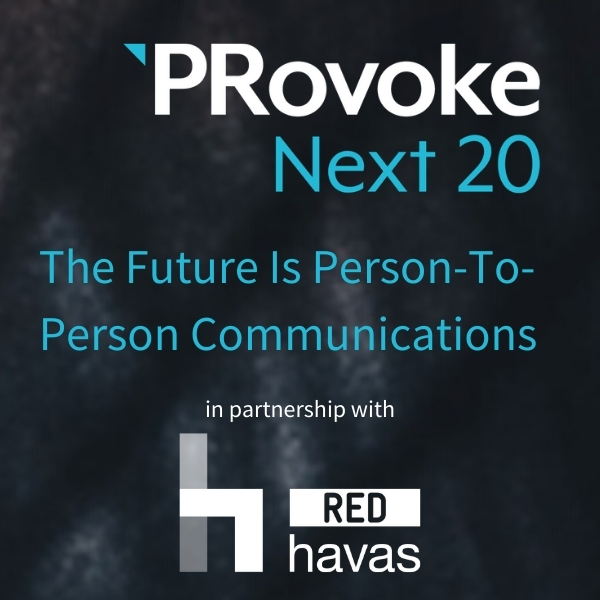Red Havas 02 Dec 2020 // 5:43PM GMT

For many of us, the shift from finding work-life balance toward a manageable work-life blend happened little by little, then—once the COVID-19 pandemic hit—all at once. Suddenly, how we interacted with everyone in our personal and professional lives changed: technology became our virtual lifeline, whether ordering groceries online, educating our children, or collaborating with colleagues, customers and clients. Very quickly, we’ve adapted to the new ways in which we communicate. And, we’ve set the bar high. We no longer silo our expectations, giving B2B companies a hall pass on how we experience their brands: We expect the same, seamless experience across the board.
The rules of engagement are changing, which provides new opportunities for brands (particularly B2B) to step into a more human and relatable territory to engage a wider audience. Today, B2B and B2C terminology is too restrictive. It’s time to broaden the definition. Simply put, the future of communications is person-to-person (P2P)-led. This shift in mindset can be daunting at first … but doesn’t need to be. The following Do’s & Don’ts can help brands navigate a smooth path forward while steering clear potential bumps in the road.
The full white paper from Red Havas is available for download here.
DO
Be Authentic
Today’s audiences are sophisticated—and sometimes a bit skeptical—of organizations and their motives. For that reason, whether it is leaning into purpose, playing up partnerships, engaging through Employee Generated Content or elevating the brand experience, when it comes to P2P, it all begins and ends with authenticity. Technology today allows people to research companies and causes, and the truth is just a few mouse clicks away. Needless to say, transparency is key. Companies that are not authentic will stumble badly and find that audiences have long memories.
Think Holistically
It’s important to look at the brand experience holistically—not just from a communications perspective. Companies that embrace the P2P approach understand that their channel customers appreciate thoughtful product design and a positive, seamless user experience in all their interactions. Breaking down internal silos helps advance a consistent customer-centric perspective that runs across and through all touch points.
Rally the Troops
Employees are powerful brand ambassadors and can offer credible ways of relating to both B2B and B2C audiences with authentic content. For example, it is estimated that employee posts are re-shared up to 24 ties more than branded posts. Organizations that are more conservative may find the idea of giving up some control to be difficult at first. But by providing some guidelines upfront, brands can effectively engage external audiences by leveraging the enthusiasm and passion of their employees.
DON’T
Paint with Broad Strokes
Partnership marketing is not new—for decades it’s been part of the playbook for B2B and B2C brands alike. But it has evolved significantly. In fact, the very definition of partnership has widened. B2B brands, following the success of B2C brands, are expanding their definition of partner to include influencers. After all, today influencers are brands in their own right. There’s an important distinction, however. Whereas consumer brands may seek mega-influencers who can guarantee millions of eyeballs, a more targeted effort—deploying micro- or nano-influencers—is typically a smarter approach for B2B brands. In other words, less is more.
Put Purpose on Pause
Even before the pandemic, audiences cared about purpose. Several global studies have reinforced that—particularly with Millennial audiences—brands need to walk the walk with supporting societal causes. This year, issues surrounding racial justice and Black Lives matter have placed this squarely at the forefront.
At the same time, this is also a year in which many companies have struggled mightily, with lockdowns and changing habits causing great disruption. Some have rebounded, others remain in a precarious position. Despite the uncertainties, now is not the time to put purpose on pause. Audiences expect brands to stay true to their purpose—not abandon longer-term priorities during times of crisis.
X Out Brand Experience
Overnight, in-person events evaporated amid concern for health and safety. While it remains unclear how quickly in-person events will rebound, now is not the time to “go dark.” Instead, now is the time to reimagine, rethink and pivot brand experiences to make more meaningful P2P connections. For instance, hybrid events that merge physical and digital offer an opportunity to create experiences that exemplify innovation and agility—the very attributes that can help distance P2P-focused brands from the rest of the pack.
The full white paper from Red Havas is available for download here.


































.jpg)












